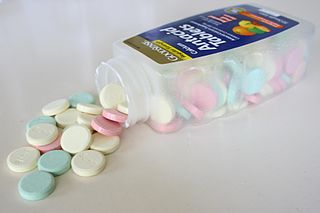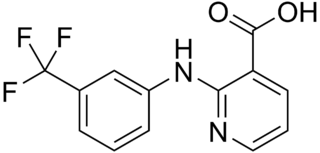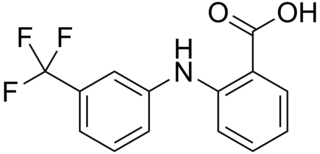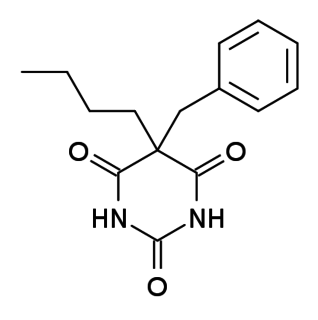
An antacid is a substance which neutralizes stomach acidity and is used to relieve heartburn, indigestion or an upset stomach. Some antacids have been used in the treatment of constipation and diarrhea. Currently marketed antacids contain salts of aluminum, calcium, magnesium, or sodium. Some preparations contain a combination of two salts, such as magnesium carbonate and aluminum hydroxide.

gamma-Hydroxybutyric acid or γ-Hydroxybutyric acid (GHB), also known as 4-hydroxybutanoic acid, is a naturally occurring neurotransmitter and a psychoactive drug. It is a precursor to GABA, glutamate, and glycine in certain brain areas. It acts on the GHB receptor and is a weak agonist at the GABAB receptor. GHB has been used in the medical setting as a general anesthetic and as treatment for cataplexy, narcolepsy, and alcoholism. It is also used illegally as an intoxicant, as an athletic-performance enhancer, as a date-rape drug, and as a recreational drug.

Lysergic acid diethylamide (LSD), also known colloquially as acid, is a psychedelic drug. Effects typically include intensified thoughts, emotions, and sensory perception. At sufficiently high dosages LSD manifests primarily visual, as well as auditory, hallucinations. Dilated pupils, increased blood pressure, and increased body temperature are typical. Since LSD binds to dopamine receptors in addition to serotonin receptors its effects are also more energetic and fast paced compared to psychedelics such as psilocybin, which is not a dopamine agonist. Effects typically begin within half an hour and can last for up to 20 hours. LSD is also capable of occasioning mystical experiences and ego disillusion, albeit less frequently than compounds such as psilocybin. It is used mainly as a recreational drug or for spiritual reasons. LSD is both the prototypical psychedelic and one of the 'classical' psychedelics, being the psychedelics with the greatest scientific and cultural significance.
Nonsteroidal anti-inflammatory drugs (NSAIDs) are members of a drug class that reduces pain, decreases fever, prevents blood clots, and in higher doses, decreases inflammation. Side effects depend on the specific drug but largely include an increased risk of gastrointestinal ulcers and bleeds, heart attack, and kidney disease.

Valproate (VPA) and its valproic acid, sodium valproate, and valproate semisodium forms are medications primarily used to treat epilepsy and bipolar disorder and prevent migraine headaches. They are useful for the prevention of seizures in those with absence seizures, partial seizures, and generalized seizures. They can be given intravenously or by mouth, and the tablet forms exist in both long- and short-acting formulations.

Omeprazole, sold under the brand names Prilosec and Losec among others, is a medication used in the treatment of gastroesophageal reflux disease (GERD), peptic ulcer disease, and Zollinger–Ellison syndrome. It is also used to prevent upper gastrointestinal bleeding in people who are at high risk. Omeprazole is a proton-pump inhibitor (PPI) and its effectiveness is similar to other PPIs. It can be taken by mouth or by injection into a vein.

Mefenamic acid is a member of the anthranilic acid derivatives class of nonsteroidal anti-inflammatory drugs (NSAIDs), and is used to treat mild to moderate pain. It is not widely used in the United States due to its side effects and high cost compared to other NSAIDs.

The Curtius rearrangement, first defined by Theodor Curtius in 1885, is the thermal decomposition of an acyl azide to an isocyanate with loss of nitrogen gas. The isocyanate then undergoes attack by a variety of nucleophiles such as water, alcohols and amines, to yield a primary amine, carbamate or urea derivative respectively. Several reviews have been published.
The DrugBank database is a comprehensive, freely accessible, online database containing information on drugs and drug targets created and maintained by the University of Alberta and The Metabolomics Innovation Centre located in Alberta,Canada. As both a bioinformatics and a cheminformatics resource, DrugBank combines detailed drug data with comprehensive drug target information. DrugBank has used content from Wikipedia; Wikipedia also often links to Drugbank, posing potential circular reporting issues.

Tiaprofenic acid is a nonsteroidal anti-inflammatory drug (NSAID) of the arylpropionic acid (profen) class, used to treat pain, especially arthritic pain. The typical adult dose is 300 mg twice daily. It is not recommended in children.

Tolfenamic acid is a member of the anthranilic acid derivatives class of NSAID drugs discovered by scientists at Medica Pharmaceutical Company in Finland. Like other members of the class, it is a COX inhibitor and prevents formation of prostaglandins.

Felbinac is a topical medicine, belonging to the family of medicines known as nonsteroidal anti-inflammatory drugs (NSAIDs) of the arylacetic acid class, which is used to treat muscle inflammation and arthritis. It is an active metabolite of fenbufen.

Orciprenaline, also known as metaproterenol, is a bronchodilator used in the treatment of asthma. Orciprenaline is a moderately selective β2 adrenergic receptor agonist that stimulates receptors of the smooth muscle in the lungs, uterus, and vasculature supplying skeletal muscle, with minimal or no effect on α adrenergic receptors. The pharmacologic effects of β adrenergic agonist drugs, such as orciprenaline, are at least in part attributable to stimulation through β adrenergic receptors of intracellular adenylyl cyclase, the enzyme which catalyzes the conversion of ATP to cAMP. Increased cAMP levels are associated with relaxation of bronchial smooth muscle and inhibition of release of mediators of immediate hypersensitivity from many cells, especially from mast cells.

Niflumic acid is a drug used for joint and muscular pain. It is categorized as an inhibitor of cyclooxygenase-2. In experimental biology, it has been employed to inhibit chloride channels. It has also been reported to act on GABA-A and NMDA channels and to block T-type calcium channels.

Flufenamic acid (FFA) is a member of the anthranilic acid derivatives class of nonsteroidal anti-inflammatory drugs (NSAIDs). Like other members of the class, it is a cyclooxygenase (COX) inhibitor, preventing the formation of prostaglandins. FFA is known to bind to and reduce the activity of prostaglandin F synthase and activate TRPC6.

Benzylbutylbarbiturate is a rare example of a barbiturate designer drug, possibly the only such compound encountered in recent years.

Glutarimide is the organic compound with the formula (CH2)3(CO)2NH. It is a white solid. The compound forms upon dehydration of the amide of glutaric acid.

5-Androstenedione, also known as androst-5-ene-3,17-dione, is a prohormone of testosterone. The World Anti-Doping Agency prohibits its use in athletes. In the United States, it is a controlled substance.

















